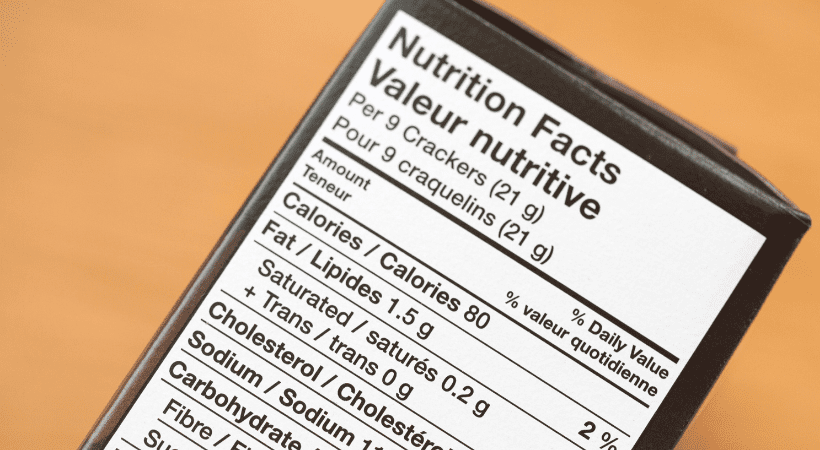The Challenges of Labelling Vegan Chocolate
The Challenges of Labelling Vegan Chocolate
Marjolein Regelink, our International Regulatory Advisor, looks at the challenges of labelling vegan chocolate.
Product innovation keeps pushing the boundaries of the law and it is becoming increasingly difficult for food businesses to determine the best description for their products, to ensure that the product is both attractive to consumers and legally compliant. So what are the challenges of labelling vegan chocolate?
Whilst not a new concept and similar products already exist on the high street, ‘vegan milk chocolate’ is marketed under a variety of descriptions; how do you know which description is correct or ‘safe’ to use? How can manufacturers be transparent about their product whilst not misleading or confusing consumers when there are regulatory constrains?
‘Vegan milk chocolate’… sounds simple enough – milk chocolate without milk, right? Not quite! This is a perfect example of an issue that arises in product innovation, legal compliance and marketing concepts ‘colliding’. Several hurdles need to be managed and overcome to bring these opposites together.

Obstacles influencing the use of descriptions such as ‘Milk’ and ‘Chocolate’
The first ‘obstacle’ is the legality of using the word ‘milk’ in relation to both – the product (chocolate) and its plant-based dairy alternative ingredient. Starting with the latter, the term ‘milk’ is reserved exclusively for products that come from the normal mammary secretion obtained from one or more milking’s. Which essentially means the normal product of milking mammals, such as cows’ milk, sheep’s milk, goats’ milk and so forth. In 2017, the Court of Justice of the European Union (CJEU) concluded in its judgement that the term ‘milk’ cannot legally be used to describe products derived from plants, unless that product is specifically mentioned on the list of exceptions. The list of exceptions is given in the legislation and contains products like coconut milk, peanut butter and cream crackers for instance.
Products such as ‘almond milk’, ‘rice milk’, ‘soya milk’ and similar plant-based dairy free products are not in the exceptions list and therefore, cannot be labelled using the denomination ‘milk’.
The former part of the question relates to the product – chocolate, and more specifically – milk chocolate. Both these denominations are legally defined: chocolate is “the product obtained from cocoa products and sugar” and milk chocolate is defined as “the product obtained from cocoa products, sugars and milk or milk products”. It becomes evident, that the law is strict on what can be called ‘chocolate’ and ‘milk chocolate’, and what cannot.
Back to our example, this product contains a plant-based dairy alternative to milk, which we discussed is not considered as ‘milk’ in accordance with the law and relevant case law. This means the product does not fit into the definition for ‘milk chocolate’ given in the European Cocoa and Chocolate Directive, and “Vegan Milk Chocolate” is therefore not an acceptable product name. But can we still call this product a “chocolate”? Possibly. To determine this, we need to consider the production process and further ingredients of the product. In our case it is not possible, as the product also contains rice flour, which is not a permitted ingredient.
Is there a safer option?
Now that we know that the ‘traditional’ denominations cannot be used for this product, there is a new challenge: what denomination could be used to describe the product instead? Vegan Milk Chocolate Alternative? – risky, as it still refers to ‘milk chocolate’. Vegan MLK/MILQ Chocolate? – also not without risk as it still contains the denomination ‘chocolate’ and we established that the product does not comply with the legally defined standard. Regarding the term ‘MLK/MILQ’ – opinions differ on whether changing one of the letters is enough to distinguish dairy alternatives from dairy products. The CJEU only refers to ‘milk’ and other designations as laid down in the legislation. One could argue that ‘MLK/MILQ’, as such, is not laid down in the law and could therefore be used to describe non-dairy products. On the other hand, the denomination is so close to the legally defined ‘milk’, that consumers will immediately associate it with the traditional dairy variety. Therefore, it is disputable whether such a description should be used, as there is a risk associated with it.
What is a safer option? Rice dairy and cocoa alternative does not sound very appealing, does it? Rice-based cocoa confectionery sounds quite pleasant and it’s not misleading according to the regulations.
Food businesses need to make informed decisions, whether to ‘play it safe’ or to take a calculated risk. Therefore, we will keep seeing a variation of approaches to naming foods on supermarket shelves, all of which will be setting a precedent for the future.
Next reads
The Peanut Diaries: School and Social Occasions
The Peanut Diaries: Navigating Social Events and Celebrations with Food Allergies
The Peanut Diaries: A Parent’s Journey to Uncovering their Child’s Allergy
Redefining Healthy: What the FDA’s New Rules Mean for Food Labels and Nutrition Claims
Keep up to date with our latest insights
Subscribe to our mailing list to stay in touch with the latest news, insights and updates from Ashbury





